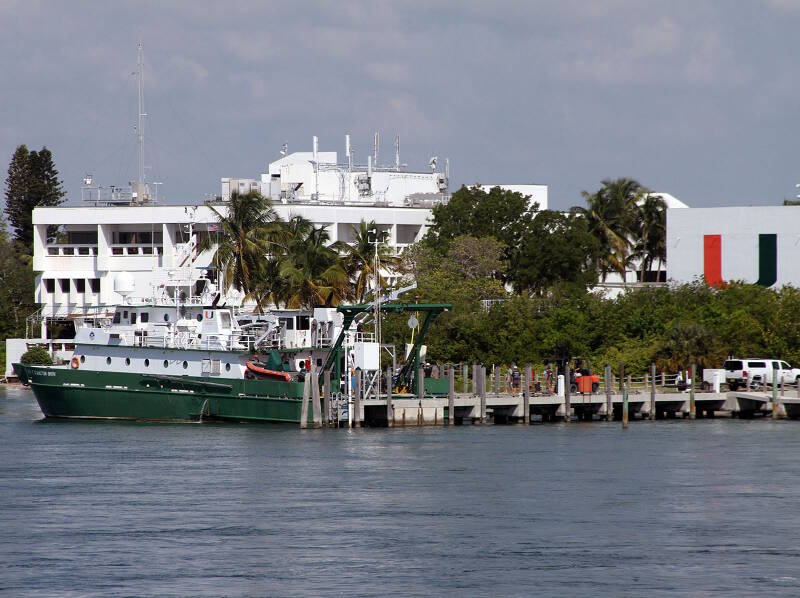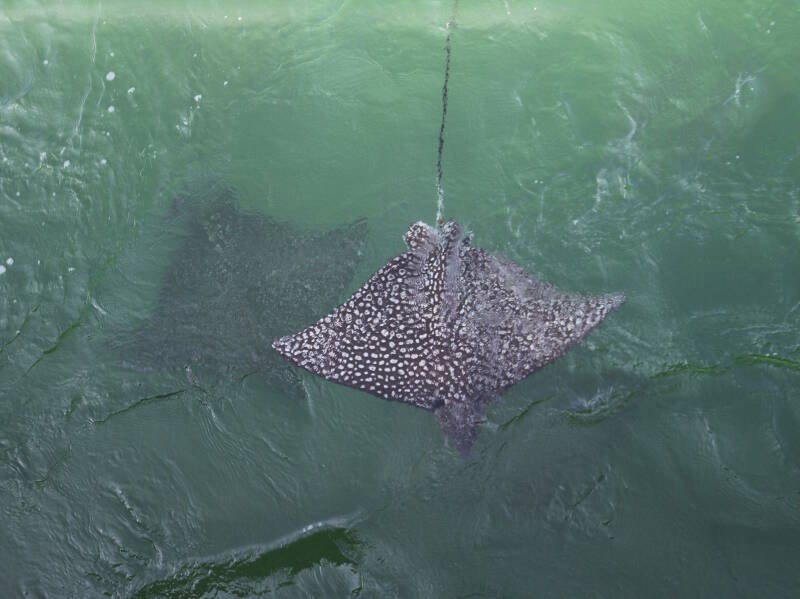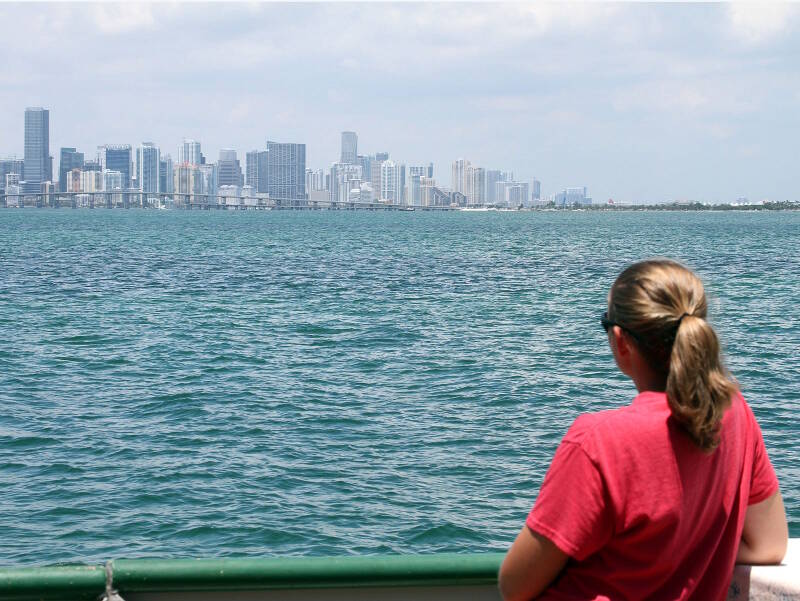
By Brian Cousin, Florida Atlantic University Harbor Branch
August 14, 2014

The Coral Ecosystem Connectivity 2014 Expedition prepares to set sail aboard the University of Miami Research Vessel F.G. Walton Smith. Named in honor of RSMAS’s founder, the 96-foot catamaran can accommodate 20 people including science team and ship’s crew. Image courtesy of Brian Cousin, Florida Atlantic University-Harbor Branch. Download larger version (jpg, 317 KB).
Memories of yesterday’s Miami traffic and dinner in Coconut Grove are vanishing in the wake of the University of Miami Research Vessel F.G. Walton Smith as it plies Hawk Channel just off the Florida Keys. As we steam towards our first research station on Pulley Ridge, the science team sets up the ship’s central lab and outside decks.

Two spotted eagle rays (Aetobatus narinari) hang out in the tidal current in Bear Cut, which connects the Atlantic Ocean and Biscayne Bay, next to the University of Miami Rosenstiel School of Marine and Atmospheric Science. Image courtesy of Brian Cousin, FAU Harbor Branch. Download larger version (jpg, 219 KB).
After converging on the Walton Smith from points as far as Tallahassee, Florida, and Silver Spring, Maryland, we are embarking on our third year of explorations of Coral Ecosystem Connectivity: From Pulley Ridge to the Florida Keys. We begin with Chief scientist, Dr. Dennis Hanisak (Harbor Branch Oceanographic Institute at Florida Atlantic University) reviewing the cruise plan with all participants. It’s a multi-disciplinary science team and we will be characterizing benthic and fish communities using a remotely operated vehicle, collecting genetic samples of larger fish species, and characterizing planktonic larval fish and invertebrates.
If all goes well, each activity will flow smoothly from one to another. At least that’s Plan A, but as they say: “Anyone can do Plan A.” It is the Chief Scientist’s job to be prepared with Plan B because things can happen with ships, electronics and salt water, weather – and it is hurricane season after all. NOAA’s National Hurricane Center website indicates that tropical storm formation is not expected during the next 48 hours. Two years ago, in 2012, the Coral Ecosystem Connectivity cruise wrapped up two days early as Hurricane Isaac forced the Walton Smith back to shore and partway up the Miami River. We are hoping the good weather predictions continue for the remainder of our cruise.

LT Heather Moe admires the Miami coastline from the F.G. Walton Smith as we begin our transit to Pulley Ridge. Heather is a staff scientist and NOAA Corps officer stationed at the NOAA Fisheries Panama City Laboratory. She will work with the remotely operated vehicle (ROV) team to annotate fish species observed during ROV dives. Image courtesy of Brian Cousin, FAU Harbor Branch. Download larger version (jpg, 378 KB).
We left the dock today at a few minutes after 1 pm in the full sun and heat of Miami in August. Transit time to Pulley Ridge is expected to be in the range of 24 hours, and we plan to start operations right away. See our Mission Plan to learn about the science objectives and the technology that will be brought to bear by the science team over the coming days as we explore Coral Ecosystem Connectivity: From Pulley Ridge to the Florida Keys. Welcome aboard!